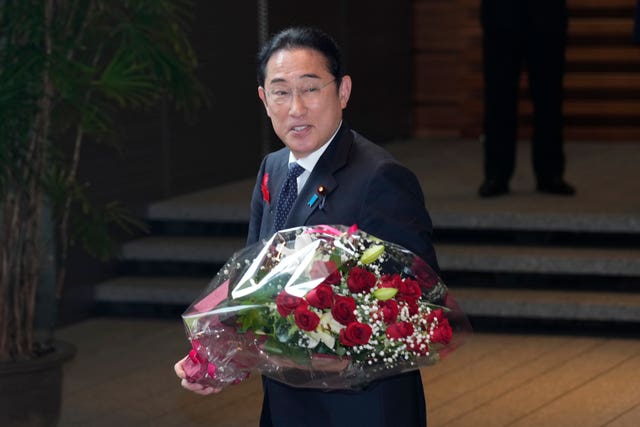Japan’s parliament elects Shigeru Ishiba as new prime minister
Mr Ishiba was chosen as the governing Liberal Democratic Party’s leader on Friday to replace Fumio Kishida.

Japan’s parliament has formally elected Shigeru Ishiba, head of the governing Liberal Democratic Party, as the country’s new prime minister.
Mr Ishiba was chosen as the party’s leader on Friday to replace Fumio Kishida, who then stepped down earlier on Tuesday to pave the way.
Mr Ishiba will announce his new Cabinet later on Tuesday.

Mr Kishida took office in 2021 but left so his party could have a fresh leader after his government was dogged by scandals.
Mr Ishiba plans to call a parliamentary election for October 27.
“I believe it is important to have the new administration get the public’s judgment as soon as possible,” Mr Ishiba said on Monday in announcing his plan to call a snap election.
Opposition parties criticised Mr Ishiba for allowing only a short period of time for his policies to be examined and discussed in parliament before the national election.
Mr Kishida had announced in August that he would resign at the end of his three-year term.
Mr Kishida and his ministers stepped down at a Cabinet meeting on Tuesday morning, Chief Cabinet Secretary Yoshimasa Hayashi said.
Mr Kishida left his office after a brief send-off ceremony in which he was presented with a bouquet of red roses and applauded by his staff and former Cabinet members.
“As we face a critical moment in and outside the country, I earnestly hope key policies that will pioneer Japan’s future will be powerfully pursued by the new Cabinet,” Mr Kishida said in a statement, citing the need to bolster security amid a deepening global divide, such as Russia’s war in Ukraine, while tackling a declining birthrate and population, as well as economic and political reforms at home.
Mr Ishiba earlier announced his party’s leaders ahead of naming his Cabinet.

The majority of his Cabinet ministers, like Mr Ishiba, are expected to be unaffiliated with factions led and controlled by party heavyweights, and none are from former prime minister Shinzo Abe’s powerful group linked to damaging scandals.
Mr Ishiba’s lack of a stable power base could also mean a fragility of his government and “could quickly collapse” even though Mr Ishiba hopes to build up party unity as it prepares for the upcoming election, the liberal-leaning Asahi newspaper said.
The move is also seen as revenge by Mr Ishiba, who was largely pushed to the side during most of Mr Abe’s reign.
Mr Ishiba has proposed an Asian version of the Nato military alliance and more discussion among regional partners about the use of the US nuclear deterrence.
He also suggested a more equal Japan-US security alliance, including joint management of US bases in Japan and having Japanese Self-Defence Force bases in the United States.





